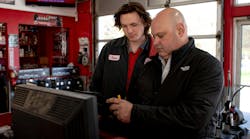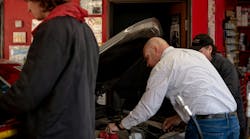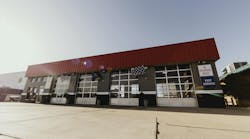With low starting costs, attractive profit margins and short-term training requirements, window film can quickly prove to be a viable business addition. This profitable add-on is projected to surge in popularity given rising energy costs and increased regulations.
Window tint — also known as solar control film — has long been a favored, low-cost solution for reducing energy loss. Advancements in window film technology have increased features and choices for consumers. Window film provides consumers with increased privacy and safety — the bonded film increases the strength of the glass.
Window film is regularly applied to vehicles, homes, buildings and even boats.
“Window film installation is a great addition to any business. It requires minimal investment,” said Craig Shelby, key account manager at Madico Window Films, one of the nation’s largest solar film manufacturers. “Training for an installation technician requires a short [instruction] period, and the profit margins are a great addition to any current business owner.”
By using window film, consumers can reduce cooling costs by 30 percent, according to the non-profit, International Window Film Association. Besides higher energy costs, the race to go green and save energy is being partially fueled by tougher government policies and is expected to increase the $450 million window film market to $863 million by 2018, according to Lux Research Inc.
The U.S. Energy Information Administration anticipates a 13 percent increase in summer cooling days this year, making window tint an even more attractive option for consumers who are anxious to beat the heat. The Skin Cancer Foundation also recommends the use of window film to reduce harmful, ultraviolet rays, which accelerate the growth of wrinkles and cause skin cancer.
“Solar radiation from the sun is divided into three components: visible light we can see, infrared and ultraviolet rays,” Shelby said. “As the sun’s radiation enters a piece of glass, window film blocks UV rays through glass and reduces the levels of heat and light passing through the glass. The level of heat and light rejected is dependent on the type of window film selected.”
Shades of tint are unlimited and classified according to their visual light transmission (VLT). Shelby explained, “VLTs of 5-90 percent are available, with customizable options as requested.” However, VLT regulations vary, depending upon location.
Consumers seeking the highest energy efficiency no longer have to resort to the darkest tint.
“In the past, darker shades of film were designed to provide the greatest amount of heat rejection,” Shelby said. “In today’s advanced products, new manufacturing processes and advanced material allow for film to be virtually clear with great heat reduction properties.”
Tint application is not difficult. A pressure sensitive adhesive film is normally used for vehicle applications. The window is first thoroughly cleaned and then sprayed with a mixture of application fluid and water. The liner is removed from the film, which exposes the adhesive.
“The film is placed adhesive-side toward the window and a squeegee is used to remove any excess application fluid from the product by use of specific pattern strokes,” Shelby said. “After a period of time, the adhesive creates a bond with the glass.”
Automobiles require an additional application step called shrinking, which allows the film to conform to curved glass.
Short-term training requirements make solar film treatments an even more attractive add-on.
“Installing window film on a vehicle is an attention-to-detail and hands-on profession,” Shelby said. “I’ve witnessed training schools where some individuals pick up the skills within a few days. It will take up to two weeks, but perfecting the trade requires time and adopting new techniques and skills.”
Window tint enhances the value of a vehicle, so long as the VLT does not violate local laws.
“A four-door sedan, with five available windows for tinting, might be finished in one to three hours, depending on the complexity of the vehicle and the skill-level of the technician,” Shelby said. “Cost of materials for a typical sedan will normally range between $15 and $30. Labor ranges between $50 and $100, depending on the complexity of the application. Retail price for a tinted sedan will vary from $175 to $500, depending on materials and labor.”
If you’re looking for an add-on service to keep your customers cool and safe — and heat up your profits — consider adding window tinting to your service menu.





